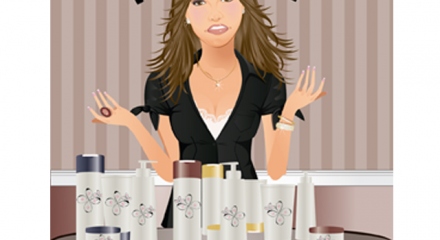Have you ever looked at the back of your shampoo/conditioner/styling product and wondered what all of those words on the ingredients list mean? And what they are actually doing to your hair and scalp? Here I de-mystify some of the most commonly used product ingredients.
SILICONES: Over half of all hair and skin products contain silicones. When used correctly, silicones work very well. They can be excellent emollients, softeners and protectors. However, their use in shampoos should be kept to a minimum. Look at your shampoo label carefully and either do not use one containing silicone or make sure that it is far down on the ingredient list. It is also important not to put too much of a product containing silicone on your hair when styling. This can give you something DHD calls ‘silicone burn’ – an unpleasant brittleness of the hair.
Other names: Amino bispropyl dimethicone, Amodimethicone, Behenoxy dimethicone, Cyclomethicone-Mimethicone, Cyclopentasilaxane, Dimethicone, Dimethiconal, Phenyl Dimethicone, Phenyl Trimethicone (gives shine), Phenylpropyl Dimethicone.
ANTI-OXIDANTS: Are used to inhibit oxidation, which causes colour changes and rancidity in products.
ANTI-STATICS: Reduces your hairs static charge; They work by neutralising electrical charges your hair gathers from environmental sources or products.
BOTANICALS: Are extracted from plants through various chemical and physical processes. There are a large number of botanicals, but not that many are used in hair products. And when there are, it is in very small quantities. Their appearance on a label usually means that the manufacture is trying to appeal to your ‘green’ leaning. However, these products often will have extra preservatives, which almost defeats the purpose. Some botanicals, such as witch hazel, capsicum, camphor, cloves, eucalyptus and other essential oils, can be very beneficial in certain circumstances.
BUFFERS: Are used to maintain the PH balance (acidity/alkalinity) of your product. Although they do not necessarily affect the behaviour of your hair, they can affect the way your product looks.
COUPLING AGENTS: These help to make ingredients more soluble and easier to mix/emulsify. Many ingredients are chemically or physically incompatible, but some manufacturers still combine them for specific reasons.
DENATURANTS: Used to make some alcohol-containing products unfit and unpleasant to drink.
DETERGENTS: The mere name, somehow or other, has become synonymous with ‘strong, drying, lethal-for-hair, should only be used for dishwashing or laundry’. Detergents, however, are defined as purifying or cleansing agents. They cleanse the hair by emulsifying oils and suspending dirt particles in your hair and this allows them to be rinsed away!
FIXATIVES: These are not hair fixatives. They ‘fix’ or set fragrances and perfumes in a product, giving products a long-lasting aroma.
Laminates: These basically give your hair gloss and shine. Laminates are a new name as a concept, but are really leave-in conditioners that give extra sheen. Their active ingredients are mostly silicones, often with multiple combinations of them. Because laminates contain silicones, they are most effective when used sparingly. A small amount used on damp or dry hair spreads easily, and will give your hair a lovely sheen. But overuse can make your hair heavy and greasy looking.
Mud and Waxes: Are mostly used by men and women with shorter styles for a fixed and spikey look. Muds and waxes are based on the old-fashioned pomades and are oily waxes (the old moustache wax used to twist long moustaches into shape was similar!) But now they have the addition of silicones with a variety of other ingredients. These include polymers, which are heavy thickening agents. Fixatives include PVP, Acrylamides, Acrylates, Butyle Esters, Karayagum, and Copolymers. The higher up on the ingredients list these are, the more fixative the mud/wax will be.
.
Dispersants: Often used to stabilize a suspension or dispersion of an ingredient that doesn’t dissolve. Dispersants keep the ingredients in a hair product separated, but evenly mixed into the smallest possible parts throughout the product.
Foaming Agents: Psychologically, good lather or foam is essential for a shampoo. But it doesn’t necessarily add to the cleansing effect. Some excellent shampoos produce little lather. As long as there are enough bubbles to lift the dirt from your hair and allow it to be rinsed away, then the shampoo will have cleaned your hair. There are three types of foaming agents – foam boosters enhance the quantity and quality of lather; foam stabilizers decrease the tendency of bubbles to disappear and foamers simply produce foam – an emulsion of air in water. Foaming agents also include detergents, emulsifiers and surfactants. A surfactant lowers the surface tension between two or more substances, enabling them to be emulsified and form a foam.
Plasticizers: Make film-forming ingredients more flexible and softer. They are also used to denature alcohol (methyl), making it unfit to drink!
Moisturizers: Increase the moisture content of your skin and hair. Water is in fact your hairs most natural hydrator! Moisturizers add softness and control to frizzy hair.
Vitamins: Some products contain vitamins as a marketing gimmick. There is no evidence to our knowledge, or any true scientific data to support the claims that they are absorbed into the hair. But they may be used to coat or smooth the hair shaft. Vitamins, like proteins, are best for you when eaten.
